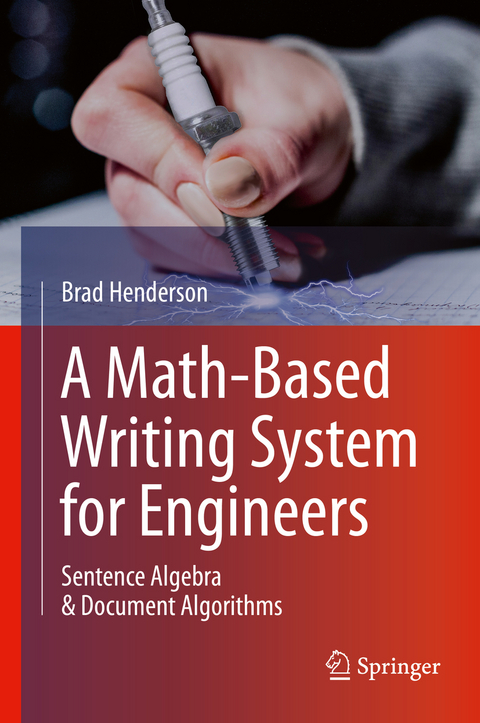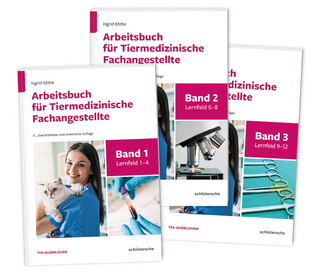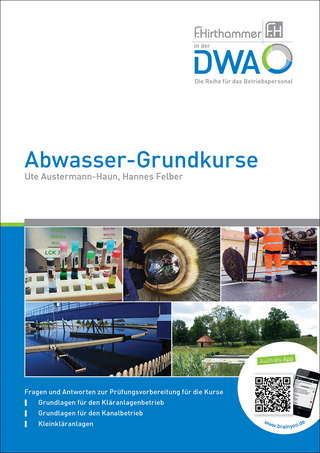
A Math-Based Writing System for Engineers
Springer International Publishing (Verlag)
978-3-030-10754-3 (ISBN)
This book presents the generative rules for formal written communication, in an engineering context, through the lens of mathematics. Aimed at engineering students headed for careers in industry and professionals needing a "just in time" writing resource, this pragmatic text covers all that engineers need to become successful workplace writers, and leaves out all pedagogical piffle they do not. Organized into three levels of skill-specific instruction, A Math-Based Writing System for Engineers: Sentence Algebra & Document Algorithms guides readers through the process of building accurate, precise sentences to structuring efficient, effective reports. The book's indexed design provides convenient access for both selective and comprehensive readers, and is ideal for university students; professionals seeking a thorough, "left -brained" treatment of English grammar and "go to" document structures; and ESL engineers at all levels.
Brad Henderson is a Continuing Lecturer in the University Writing Program at the University of California, Davis. He holds a BS in mechanical engineering and a master's in professional writing.
Chapter 1. Introduction to the Math-Based Writing System.- PArt I. Chapter 2. Part I Primer: The Elements of Sentence Algebra.- Chapter 3. The Core Variables N, V, and X.- Chapter 4. The Accessory Variables: Mn, Mv, L, C, and I.- Chapter 5. Basic Sentence Equations: B1, B2, and B3.- Chapter 6. More Basic Sentence Equations: B4 and B5.- Chapter 7. Advanced Sentence Structures: Compound and Complex Sentences, and Relative Clauses.- Chapter 8. More Advanced Sentence Structures: Verbal Phrases, Inversions, and Variations.- Part II. Chapter 9. Part II Primer: The Elements of Sentence Optimization.- Chapter 10. Simplify & Clarify.- Chapter 11. Eliminate Category I Errors.- Chapter 12. How to Advance Optimal Style.- Chapter 13. How to Minimize Category II Errors.- Part III. Chapter 14. Part I Primer: The Elements of Document Algorithms.- Chapter 15. Project Proposals.- Chapter 16. Status Reports.- Chapter 17. Project Reports.- Chapter 18. Tech-to-Nontech Briefs.- Chapter 19. Instructional Job Aids.- Chapter 20. Expanding and Innovating Short-Form Documents into Long-Form Documents.- chapter 21. Twenty Universal Features of Excellent Engineering Documents.
"A Math-Based Writing System for Engineers has been written for engineers but could be particularlyhelpful in any STEM-based profession ... . Engineering communication instructors will find the book well organized and practically structured to support coursework in the subject area. ... Henderson offers practical, strategic writingadvice for writing clearly and concisely in a variety of formats. His approach to formulating grammar rules into mathematical expressions and algorithms will serveengineering audiences particularly well." (Jennifer Goode, Technical Communication, Vol. 68 (3), August, 2021)
| Erscheinungsdatum | 13.10.2019 |
|---|---|
| Zusatzinfo | XXIV, 357 p. 74 illus., 17 illus. in color. |
| Verlagsort | Cham |
| Sprache | englisch |
| Maße | 155 x 235 mm |
| Gewicht | 764 g |
| Themenwelt | Sozialwissenschaften ► Pädagogik ► Berufspädagogik |
| Sozialwissenschaften ► Pädagogik ► Erwachsenenbildung | |
| Sozialwissenschaften ► Soziologie ► Spezielle Soziologien | |
| Technik | |
| Schlagworte | Engineering Writing Primer • ESL for Engineers • Just-in-time Learning • Sentence Algebra • Technical Communication for Engineers • Technical Reports Guide • Technical Writing Guide |
| ISBN-10 | 3-030-10754-X / 303010754X |
| ISBN-13 | 978-3-030-10754-3 / 9783030107543 |
| Zustand | Neuware |
| Informationen gemäß Produktsicherheitsverordnung (GPSR) | |
| Haben Sie eine Frage zum Produkt? |
aus dem Bereich


